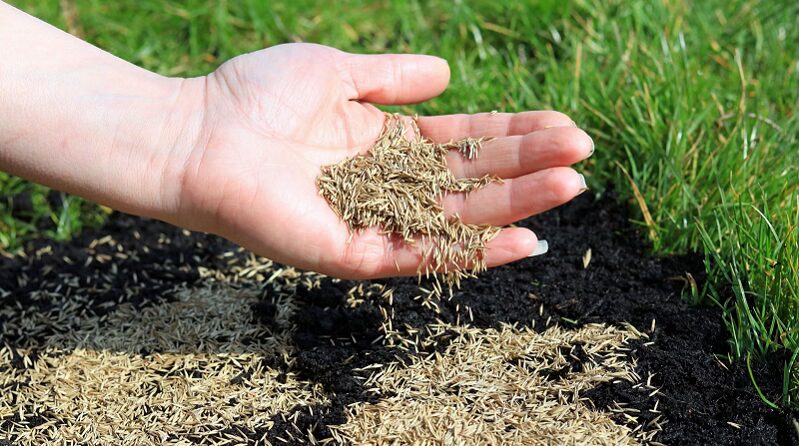Have you ever wondered when to overseed a lawn in spring? Timing is everything, and getting it right can make the difference between a patchy yard and a lush, green oasis. Overseeding a lawn is one of the best ways to rejuvenate thinning turf and strengthen your landscape.
In this blog, we’ll break down the best time to overseed, how to prepare your lawn, and how to boost your success rates with services like Core Aeration and Detaching.
Best Time to Overseed a Lawn in Spring
The ideal time to start overseeding a lawn depends on two main factors: soil temperature and grass type.
- Cool-Season Grasses (like tall fescue, Kentucky bluegrass, and perennial ryegrass):
Ideal soil temperature: 50°F to 65°F. Best done in early spring or fall. - Warm-Season Grasses (like Bermudagrass and Zoysia):
Ideal soil temperature: above 65°F. Best done in late spring.
Tip: Keep an eye on weather forecasts to avoid late frost damage after seeding!
How to Determine Soil Temperature
Accurate soil temperature is critical before overseeding a lawn. Here’s a simple method:
- Use a soil thermometer, inserting it 2–6 inches deep.
- Record the temperature daily, early in the morning.
- Ensure consistent readings for three consecutive days before overseeding.
If your readings align with the right temperatures for your grass type, it’s time to start!
What is Overseeding?
Overseeding is the process of spreading new grass seed over your existing lawn. It fills in bare spots, thickens turf, and boosts lawn health without tearing up the entire yard.
Benefits of Overseeding a Lawn:
- Improves appearance and color
- Increases grass density
- Enhances resistance to weeds
- Strengthens disease resistance
- Controls erosion naturally
- Reduces chemical dependency
How to Overseed in Spring: Step-by-Step
Achieving lush results starts with proper preparation:
- Mow low: Cut your lawn 1 inch shorter than normal.
- Clear the area: Bag clippings; remove debris and thatch.
- Prep the soil: Lightly rake or add a thin layer of compost or enriched topsoil.
- Choose the right seed: Select a grass seed suited to your region.
- Seed evenly: Use a handheld or walk-behind spreader.
- Water diligently: Light daily watering keeps the soil moist for successful germination.
Pro Tip: After overseeding a lawn, pair the process with over Seeding and Fertilization for maximum success!
Maximize Overseeding Success with Professional Lawn Services
Want even better results? Boost your overseeding efforts with these techniques:
Dethatching
Excess thatch can block seeds from reaching the soil. Detaching helps eliminate this barrier, allowing grass seeds to make direct contact with the ground.
Core Aeration
Core Aeration tackles soil compaction by creating pockets where seeds can settle, improving water and nutrient flow to roots.
Power Seeding
Power seeding combines seeding and soil slicing, ensuring optimal seed-to-soil contact. It’s a faster, highly effective method — perfect for stubborn, thin lawns.
Conclusion: Get Ready for a Lush Lawn This Spring
Overseeding a lawn in spring is one of the best ways to revitalize your yard and enjoy thick, healthy turf all season long. By understanding the best timing, preparing your soil, and using techniques like Core Aeration and Detaching, you can dramatically improve your lawn’s success.
If you’d like expert help, our Lawn Maintenance and Over Seeding and Fertilization services are here to make sure your lawn looks its absolute best this year.
FAQs
What is the Best Month to Overseed a Lawn?
For cool-season grasses: early spring (March) or fall (late August–early September).
For warm-season grasses: late spring (around May).
How Often Should You Overseed a Lawn?
Overseed once a year to maintain a thick, healthy lawn.
Should You Overseed Before or After Applying Herbicide?
Wait at least 30 days after using pre-emergent herbicides before overseeding a lawn.
When Should You Call the Pros?
If you want expert care without the hassle, call a professional for services like over Seeding and Fertilization, Core Aeration, or a full Lawn Maintenance plan.


